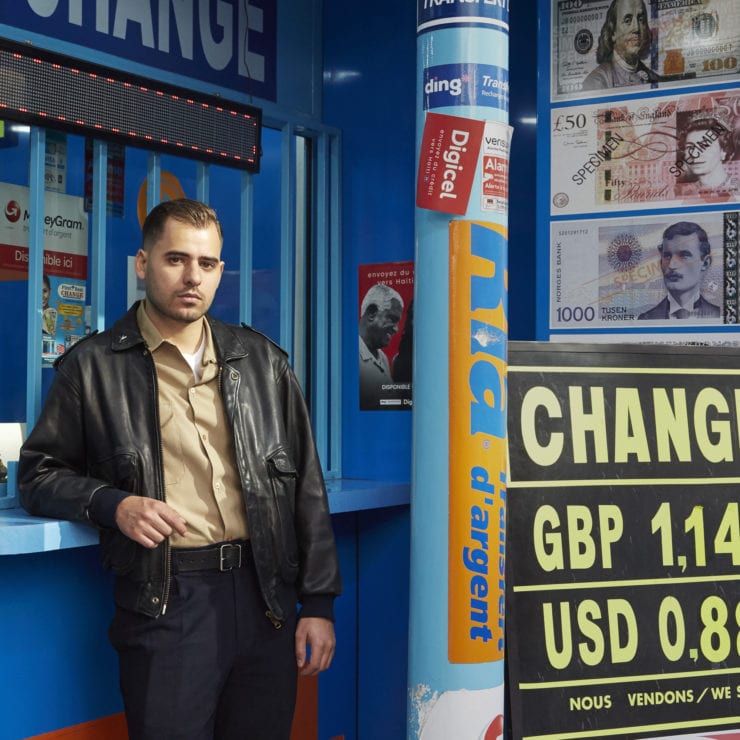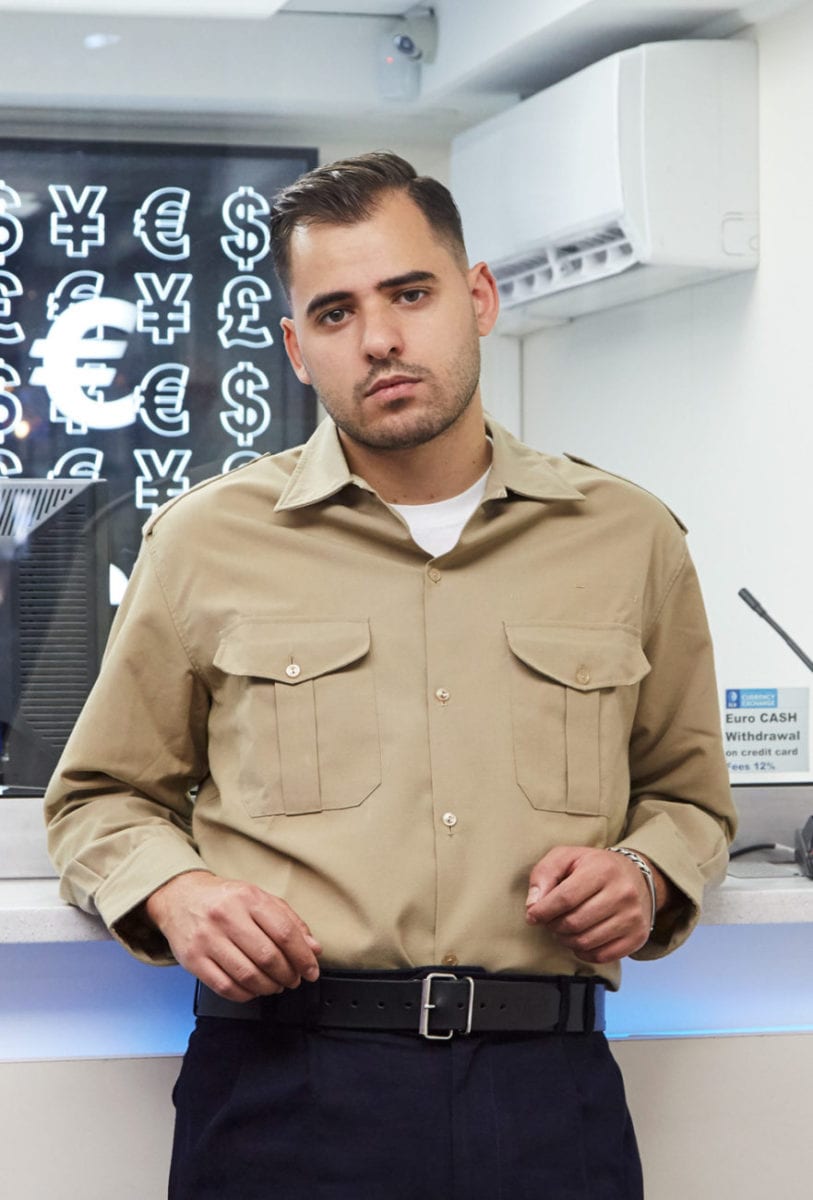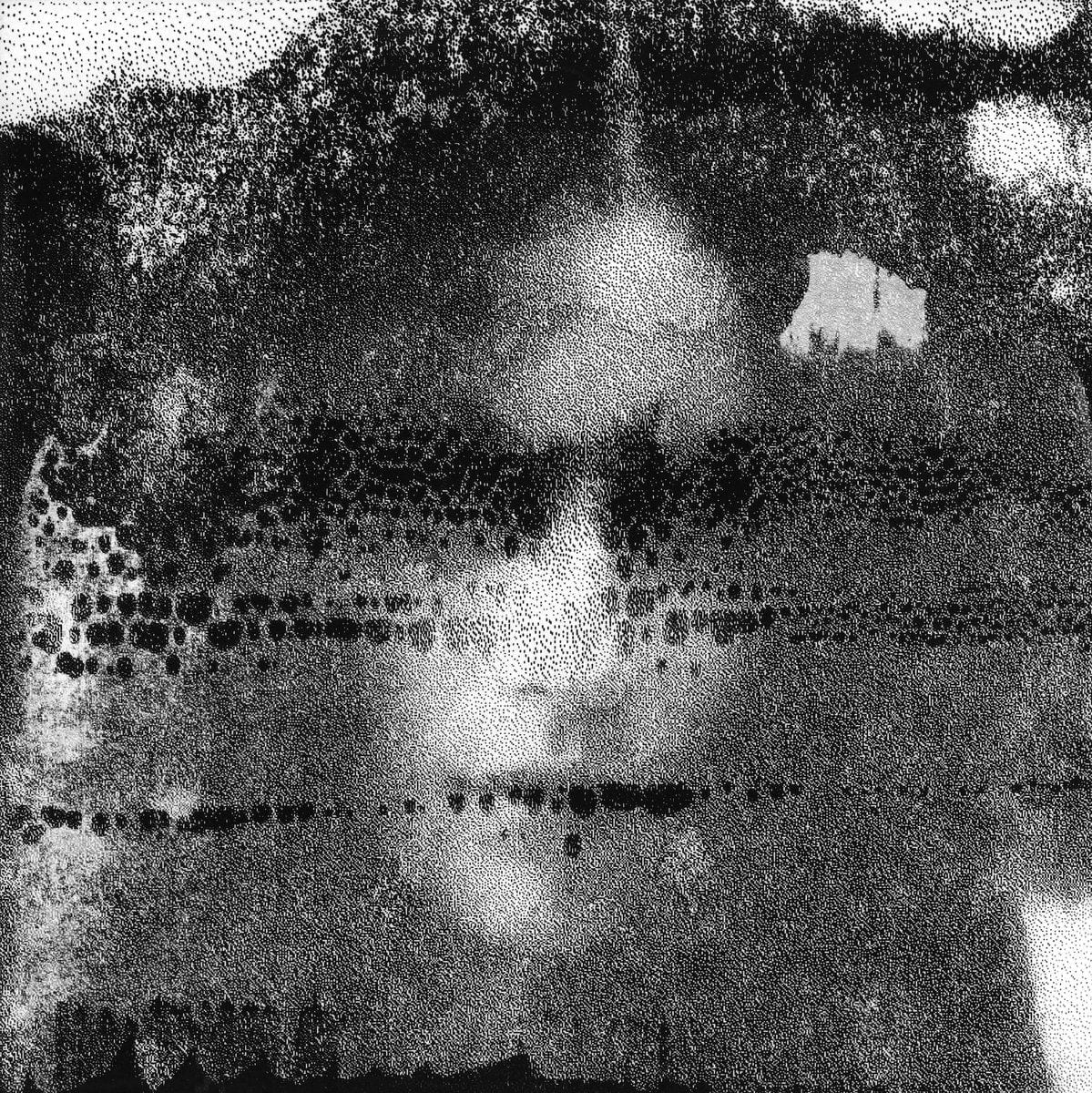
Trace back to 2014: a young, unheard French duo named Mura Oka (literally ‘Village Hill’ in Japanese), formed by Louis Vial and Sidney Gerard, pops out of the blue with a stellar debut album, ‘Auftakt‘, that will earn them praise from all sides of the underground whilst helping establish Sidney’s co-founded record label, Latency, at the spearhead of leading-edge European imprints.
A fascinating journey across multi-layered ambient spans, industrial-esque drum experiments and brooding dubs, this inaugural long-player somehow prefigured the aesthetic path Louis Vial, aka Eszaid, would take as a solo artist, and set the tone of his work as the co-operator of his own label Collapsing Market.
Two months after the landing of his second full-length, ‘Eurosouvenir‘, it’s with the greatest pleasure that we welcome Louis to our mix series, as he steps up with over an hour-long of harsh dungeon beats, jagged anti-techno and so-called leftfield swerves. To push things further, we caught up with him to speak about teenage musical epiphanies, his approach to DJing and label operations.
Interview by Baptiste Girou

"I’m not into this DJ thing that’s about “feeling the crowd” or trying in any way to connect yourself to people through music. If something special happens between you and the crowd, that’s a good feeling of course, but it depends on a wealth of parameters you just can’t control."
Hey Louis, thanks for that wicked deeply immersive mix. Can you please tell us more about it? When and how was it recorded?
Thank you! For this mix, I wanted to use tracks essentially produced by people close to me, or friends of friends from the local scene, or myself. I thought I had enough quality material from people around me to put it together and link it with my own work.
I also wanted the mix to be built around 95-100 bpm for two main reasons. First, because I’m not used to it, since when we do DJ sets along with Cyrus (my sidekick from Collapsing Market), we’re used to play music around the 130-140 mark.
Then, it’s also because I think some of the most interesting explorations in current club-related music share this common kind of slow (or twice faster) tempi – closer to dub, dancehall or hip-hop than it is to techno.
I recorded it at home, in my studio and, to be honest, the magic happened on Virtual DJ as I don’t have CDJs at home and never learnt how to synchronise tracks on Ableton.
Much like your own compositions, the mix pulsates with a fine combination of murky atmospherics, steely drum impact and ghostly dub accents. What do you usually have in mind when putting a set together? Do you think of the crowd’s reception mainly, tracing your own narrative arc, or both?
The first part of your question is a very good sum up of what fascinates me in electronic music, and what I tend to make.
We mostly play DJ sets back to back with Cyrus and, as far as I’m concerned, the crowd’s reception is important but not my priority. The most important thing for me is to play and listen to the music I love at a loud volume, and – if possible – on a dope sound system.
I’m not into this DJ thing that’s about “feeling the crowd” or trying in any way to connect yourself to people through music. If something special happens between you and the crowd, that’s a good feeling of course, but it depends on a wealth of parameters you just can’t control.
Let’s rewind to the roots of your main alias, Eszaid. How was this musical journey born?
I used to share a home studio with Sidney from Latency when we were roommates. At that time, I put all my creative energy into our common project, Mura Oka. I did not even think about releasing music under a solo alias or my own name until we released the LP on Latency.
It was in 2014, and we had just created Collapsing Market with Cyrus. We had only released mixtapes at that time, and thought that it would be good to take the leap and become a real record label. It’s only at that moment that I started to seriously produce music on my own, which was bound to become the first vinyl release on CM.
I’m actually better at making things when I set myself a goal – when I know the tracks I’m working on will see the light of day. I’ve never been into long jamming sessions just for the sake of it. I prefer to follow a line, even if it comes out on nothing.

"I discovered electronic music when I was about eighteen, by immersing myself into more experimental stuff from the sixties and the seventies – mainly Terry Riley, Kraftwerk of course, and François de Roubaix, whose music really obsessed me"
What prompted you to start producing music yourself? Do you recall a life-changing moment, one that redefined your whole existential landscape; like hearing a record, attending a gig, or buying/being offered a particular piece of gear?
I remember that I decided to start playing the drums as a kid when I listened to the Rolling Stones ‘Street Fighting Man‘ with my piano teacher’s son, who was himself a drummer.
I only took two piano lessons, but became obsessed with drums. So I played the drums for about 10 years, but never really had a band during my teenage years since I wanted to play with people that would be dressed like me and who would listen to The Stooges and La Souris Déglinguée, and this kind of people simply does not exist in my hometown.
I discovered electronic music when I was about eighteen, by immersing myself into more experimental stuff from the sixties and the seventies – mainly Terry Riley, Kraftwerk of course, and François de Roubaix, whose music really obsessed me.
I started buying electronic organs and synths without any idea how to play them, but anyway I started to record really bad stuff for two or three years, before starting to make music with Sidney, whose further club music-oriented culture started rubbing off on me.
Were you raised in a music-loving family or was this appeal toward the realm of sound more of a personal process/individual thing?
My parents were great music enthusiasts, and I discovered some ace stuff through them when I was a child. My mom was into stuff like T-Rex or David Bowie. I think I know the album with The Spiders From Mars by heart since I’m eight.
My dad had a good post-punk and new-wave culture inherited from his years in the ’80s nightlife I guess. He also often traveled to London, Tokyo and New York, from where he returned with hot new hip-hop or drum’n’bass CDs, which always fascinated me. I especially remember that album by East Flatbush Project ‘Tried By 12‘ featuring artwork by Futura 2000 and a remix by Autechre.
When I was about 10, my mom became friends with some people involved in the garage, mod and punk scene in the south of France, and we’d always follow them to concerts or festivals… I can say that I have been pretty lucky.
The duo you form(ed) alongside Sidney from Latency, with whom you released the top-notch ‘Auftakt’ LP about five years ago has been silent for quite some time now. Is it definitely over, or do you ever contemplate the idea of waking the project from its slumber?
Nothing is fixed concerning Mura Oka. It’s just that our lives changed and we truly put a lot of energy into that first LP. However, we never clearly said it was over, and we’re still very close friends, so maybe one day…
Back in 2014 you created your own structure Collapsing Market along with close friend Cyrus (Goberville), which is safe to say has gone quite a long way since landing its first highly-limited runs of tapes. What are your aims and aspirations for the label?
Our first aim is to keep it alive and to continue releasing records that we love! It may seem simple said this way, but it’s kind of a daily struggle. Since running a music label and releasing music is kind of a teenage dream for both of us, pushing the thing forward is our main aspiration. I’m very lucky to work with someone like Cyrus who is as good at artistic choices as for the management of the whole thing – which I’m clearly not.
How do you approach releases? The audio and visual facets of each record seem to be very carefully balanced…
When an artist sends us music, we select the tracks and choose the order with Cyrus after some extended listening sessions. Then, we talk about how to present the music with Ethan Assouline, who has joined the CM ship for good, and is now completely involved in all of the label’s projects.
We try to think together about what the music evokes to us, and then Ethan comes up with a batch of drafts for the artwork. It’s often a very long process to find images that really fit the music as well as the narrative frame of the label, but we always make it good, and this part of the work appears to be fulfilling in the end.
We can occasionally work with another artist, as we worked with Thomas Jeppe for the Morteza Hannaneh’s one. He’d been living in Iran for one year and had a strong vision to bring to this release.

"If you pay attention to our whole catalogue, you’ll find out that there is not a single release in there that could be classified neither in a very specific genre, nor a specific trend. Each release has its share of ambiguity, opposing forces and anti-literal understanding"
How close an eye (ear?) do you keep on the material artists send you? Do you make extended use of your right of inspection and ask for retouches, or prefer to keep absolute trust in them, although the final result may differ from your initial “expectations”?
To be honest, I don’t like to ask artists to make retouches on their music, and as an artist, I would not like to be asked to do it. If it’s done like that, there must be a good reason, and if I don’t like it, I prefer to ask for new tracks and wait a bit longer before the release.
I think that when you work with an artist and aim to release his music, you have to put yourself in his shoes, try to understand his intentions, and not just say “I’d like this part to be longer” or “this instrument to be more present“.
So yes, I’d say that I prefer to keep trust, maybe not absolute but relative trust, in artists concerning their music, and I think it’s the same for Cyrus.
From Norin to Ssaliva, through Buttechno and Morteza Hannaneh, it’s a very diverse array of artists you’ve come to work with. What would you say connects all these releases?
It’s true that they are all different, but I think that what they have in common is the way they stroke our sensibility. Cyrus once said that we are mainly interested in objects that carry an intrinsic ambivalence.
If you pay attention to our whole catalogue, you’ll find out that there is not a single release in there that could be classified neither in a very specific genre, nor a specific trend. Each release has its share of ambiguity, opposing forces and anti-literal understanding.
What’s lined up next on the label? Anything you can tell us about yet?
The tape format is about to make its comeback on CM, with a series devoted to local people we know and whose music deserves to be highlighted. The first one will be by Metta World Peace, one of the co-founders of the ‘I’ve Seen The Future’ collective, responsible for many good parties in Paris over the last few years.
Then we have a very exciting vinyl release coming, but I can not say anything more about it for the moment. And finally, we developed a small clothing line designed as an extension of the label’s aesthetic that should be out in early March hopefully.
What’s the last record store you visited and what did you bag there?
That was Geminicricket, a second hand record shop based in a Fleamarket (les Puces de Saint-Ouen). The owner is super nice and has plenty of good stuff for reasonable prices.
I bought ‘Paysages Intérieurs‘, an amazing hurdy-gurdy LP from 1986 by Remy Couvez, and the first LP of Warum Joe, one of the best French punk bands, called ‘Dans Le Blizzard‘. Best possible combination of 20th century’s turbulent history related lyrics and overspeed minimal drum machine.
What is your definition of happiness?
This is a tough one… maybe when the team that you support scores a goal?
Your worst nightmare?
Tough one as well… Olympique de Marseille losing all their games against PSG for the rest of my life. And being possessed by Satan.
What can we wish you for 2019?
Making more and more music, and releasing beautiful records on Collapsing Market.
TRACKLIST
1. I-LP-ON – Melankolia
2. Eszaid – Untitled
3. Ron Morelli – FXK Ripper
4. Gravats – Îlot (Claves) Eszaid – Satan’s Circus
5. Eszaid – Notre Mer
6. Simo Cell – Uranium
7. FUMU – Disto Beatz15
8. Black Zone One – BDSA
9. Autechre – 28 g 1 e 1
10. Bellows – Untitled B1 MARS89 – Run To Mall
11. Eszaid – Hécatombes
12. Raime – Losing Track
13. Francois Bayle – Arpegiatto
Discover more about Eszaid and Collapsing Market on Inverted Audio.
EszaidCollapsing MarketAbstractElectronicIndustrialTechno